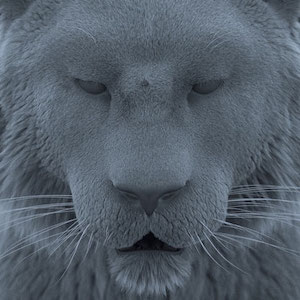Undeniably so, creatures have been the lifeblood of content in the fantasy genre. Global filmscape is fraught with stories that have featured a variety of exotic CG animals. The process of modelling a creature involves a lot of patience, creativity and a keen eye for detail. Precise details like stripes, eyes and body mechanics etc need to be on point to make animals appear indistinguishable from the real deal.

AnimationXpress spoke to 3D creature artist Massimo Righi who has been involved in various projects across games and film industry for over 15 years. Righi candidly spoke about his journey, process and motivations as to what drives him to come up with photorealistic creatures.
What inspires you to design creatures?
Well, my first source of inspiration is the love for animal kingdom. From photography to documentaries, everything regarding creatures motivate me.
Tell us about journey as a creature artist. I’m an Italian 3D artist currently living in Thailand with my wife and soulmate Silvia, who also works with me as a key artist. Interestingly enough, I owned a bookstore before fully committing myself to CG. While I was selling books, my passion for computer graphics kept growing and growing. Unlike today, online resources were scarce back then, so I read every CG magazine I could get my hands on, cover to cover. At the same time, I began learning 2D and 3D software myself. I still remember Rhino 1.0 being my starting point, then later moving to Maya. I’m entirely self-taught. At some point in the early 2000s, together with my wife I decided to sell the bookstore and pursue a professional career as a 3D artist, so I started building my portfolio and looking for freelance jobs.
What softwares do you mainly make use of?
My primary 3D software is Maya, I use Zbrush and Mudbox for sculpting and texturing and Shave and a Haircut for grooming. Arnold and Redshift as renderer.
What are the current trends that you are witnessing in the CG ecosystem?
This is a complex question. I can see the use of CG is growing in every field, but there are also many people approaching to this world hence the competition is becoming fierce and will be tougher in the future. The big vfx companies kind of dominate the market, some of them use to mass training their employees in a way that the risk of saturation is pretty real.

Tell us a bit about your body of work.
As mentioned I’ve started my CG career in the early 2000. After building my portfolio I started looking for freelance jobs, I always preferred the freedom of being able to manage myself working as freelancer. One of my fondest memories is working as an external grooming artist for the Discovery Channel on a show titled Discovering Ardi.

It was about the sensational discovery of a 4.4 million-year-old skeleton of Ardipithecus ramus. Being involved in bringing this extinct primal ape back to life on the screen was an amazing experience, overall. In the years I’ve been lucky enough to have received many recognition. My first CGSociety and 3dtotal awards back in 2006 was thrilling, and so was seeing my works printed in magazines and books. This type of recognitions always motivated me to keep improving and helped me through tough times. Even though animals were always my first choice, I modeled pretty much everything. In the first years, I did a lot hard-surface modelling. As a third-party, I collaborated with various industries, working with clients such as Volkswagen, Hyundai, Siemens and Savstar Paris amongst others. Between projects, I decided to start building a model library. I started selling models online in 2005, today I have about 400 assets available for purchase directly through my website. I’ve been – and actually still- involved in films, commercials and documentaries as creature artist.
What would you like to say to the budding artists who want to design creatures as photorealistic as yours?
Most importantly, the ability to train yourself. You need to learn how to make good use of your eyes, understand how to observe and develop an attention for details. Experience comes with time, so this is a long and sometimes even tedious process. But one day, you will look back at your older works and think to yourself: “I can’t believe how much I’ve improved!” This type of comparison is the only way to effectively measure your progress. My advice is to find your own niche and style, It’s ok to start replicating other artists at the beginning and for practice, but once you feel ready try to differentiate and find your own path and follow your passion. This will drive you far, otherwise the risk is to become another copycat.
